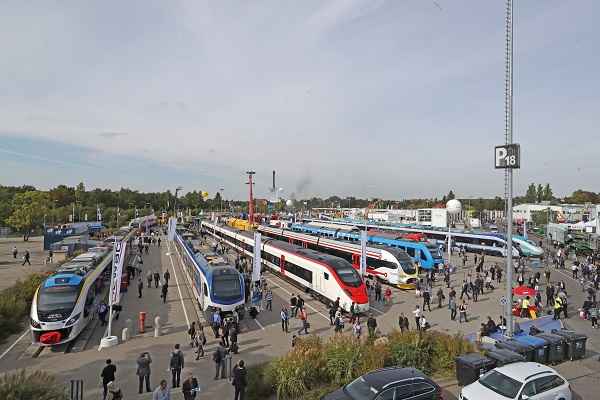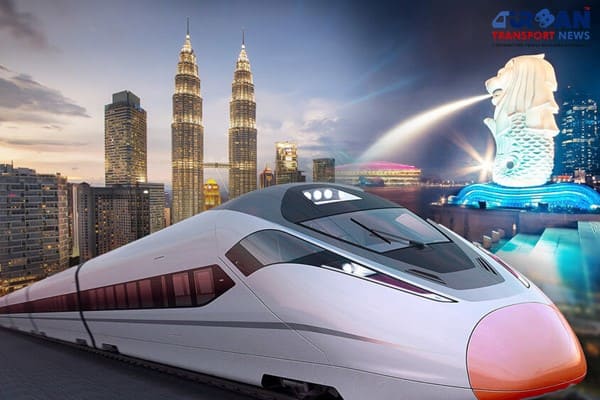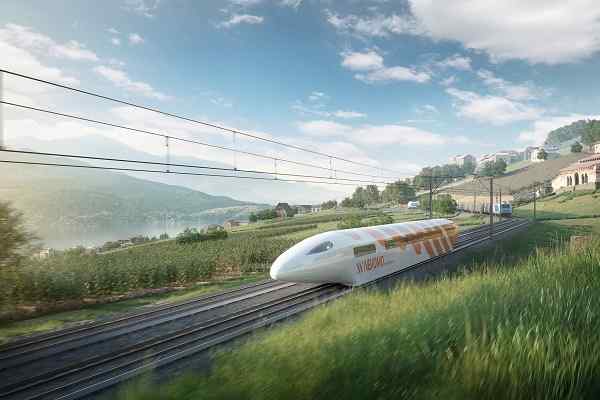 IndiGo to launch Urban Electric Air Taxis between Delhi to Gurugram
IndiGo to launch Urban Electric Air Taxis between Delhi to Gurugram Swisspod secures Strategic Investment to advance the Hyperloop Transportation
Swisspod secures Strategic Investment to advance the Hyperloop Transportation Siemens Mobility revolutionizes Copenhagen's S-bane Network with Driverless Technology
Siemens Mobility revolutionizes Copenhagen's S-bane Network with Driverless Technology Unlocking prosperity between India and Myanmar: The Kaladan Multi-Modal Transit Project
Unlocking prosperity between India and Myanmar: The Kaladan Multi-Modal Transit Project Is the RRTS Truly Accessible to the Common Man or Only the Privileged?
Is the RRTS Truly Accessible to the Common Man or Only the Privileged? Alstom sold its Rail Signalling Technology Business to Knorr-Bremse for €630 million
Alstom sold its Rail Signalling Technology Business to Knorr-Bremse for €630 million Vensa Infrastructure wins ₹412.58 crore civil contract for Hisar Airport
Vensa Infrastructure wins ₹412.58 crore civil contract for Hisar Airport Kuala Lumpur-Singapore high-speed rail project cost could be slashed to RM70 Billion
Kuala Lumpur-Singapore high-speed rail project cost could be slashed to RM70 Billion Nevomo's MagRail Technology Selected for Hyperloop Freight Demonstrator
Nevomo's MagRail Technology Selected for Hyperloop Freight Demonstrator Russia signs deal to procure bullet trains for Moscow - St. Petersburg high-speed line
Russia signs deal to procure bullet trains for Moscow - St. Petersburg high-speed line
Why are pedestrian paths mandatory along the Urban Roads?

Pedestrian paths, also known as sidewalks, footpaths, or walkways, are dedicated spaces designed for pedestrians to walk safely and comfortably. They are typically separated from vehicular traffic and provide a designated area for pedestrians to move about.
Here are some key features and aspects of pedestrian paths:
1. Physical Separation: Pedestrian paths are physically separated from roadways and vehicle lanes by curbs, medians, or other barriers. This separation helps protect pedestrians from the dangers of moving traffic and reduces the risk of accidents.
2. Width and Design: Pedestrian paths vary in width depending on the anticipated foot traffic and urban context. They are typically wide enough to accommodate multiple pedestrians walking in both directions comfortably. The path design may include features such as ramps, steps, and tactile indicators for accessibility.
3. Signage and Markings: Pedestrian paths often have signage and pavement markings to guide pedestrians and enhance safety. This can include signs indicating pedestrian-only zones, directional signs, crosswalk markings, and warning signs at intersections.
4. Accessibility Features: Well-designed pedestrian paths consider accessibility for individuals with disabilities. They may incorporate features such as curb ramps, tactile paving or detectable warning surfaces, and auditory signals at crosswalks to assist visually impaired individuals.
5. Amenities and Furniture: Pedestrian paths may include amenities and furniture to enhance the pedestrian experience. This can include benches, seating areas, shelters, lighting, landscaping, and public art installations. These elements contribute to the aesthetics and comfort of the walking environment.
6. Connectivity and Continuity: Pedestrian paths aim to connect various destinations within urban areas, such as residential areas, commercial districts, schools, parks, and public transportation hubs. They ensure continuity, allowing pedestrians to navigate through the city without interruptions.
7. Maintenance and Safety Measures: Pedestrian paths require regular maintenance to ensure they remain safe and usable. This includes keeping them free from debris, repairing damaged sections, and maintaining adequate lighting for nighttime visibility.
8. Integration with Other Modes of Transportation: Pedestrian paths often integrate with other modes of transportation, such as bus stops, bike lanes, or transit stations, to provide seamless connections between different modes of travel and encourage multimodal transportation.
Pedestrian paths are essential components of urban infrastructure, promoting safe and convenient walking, enhancing connectivity, supporting active transportation, and contributing to the overall livability of cities. They play a crucial role in creating pedestrian-friendly environments that prioritize the needs and safety of pedestrians.
Pedestrian paths are mandatory along urban roads for several important reasons:
1. Safety: Pedestrian paths provide a designated space for pedestrians to walk safely away from vehicular traffic. They help separate pedestrians from vehicles, reducing the risk of accidents and collisions. Pedestrian paths typically have features such as curbs, ramps, and crosswalks, which enhance safety and facilitate pedestrian movement.
2. Accessibility: Pedestrian paths ensure accessibility for all individuals, including those with mobility challenges, elderly people, and individuals with disabilities. These paths are designed to accommodate various needs, such as providing ramps or tactile markings for visually impaired individuals, allowing them to navigate the urban environment independently and safely.
3. Promoting Active Transportation: By providing dedicated spaces for walking, pedestrian paths encourage people to choose active modes of transportation, such as walking or jogging, for shorter trips. This promotes physical activity, reduces reliance on motorized vehicles, and contributes to improved public health.
4. Enhancing Connectivity: Pedestrian paths connect different parts of urban areas, such as residential areas, commercial centers, schools, and public transportation hubs. They improve connectivity and facilitate pedestrian movement between various destinations, making it easier for people to access amenities and services within their communities.
5. Encouraging Sustainable Transportation: Pedestrian paths support sustainable transportation by promoting walking as a viable mode of transport. Increased walking reduces traffic congestion, air pollution, and energy consumption associated with motorized vehicles, leading to a more sustainable and eco-friendly urban environment.
6. Livability and Quality of Life: Well-designed pedestrian paths contribute to the overall livability and quality of life in urban areas. They create pleasant and inviting spaces for people to walk, interact, and enjoy their surroundings. Pedestrian-friendly environments foster social connections, community engagement, and a sense of belonging.
7. Urban Design and Aesthetics: Pedestrian paths, when properly designed and integrated with the urban landscape, enhance the visual appeal and aesthetics of the city. They can include features such as trees, landscaping, seating areas, and public art, making the urban environment more attractive and inviting for pedestrians.
Overall, mandatory pedestrian paths along urban roads prioritize the safety, accessibility, and well-being of pedestrians, promote sustainable transportation, and contribute to creating vibrant and pedestrian-friendly cities.






